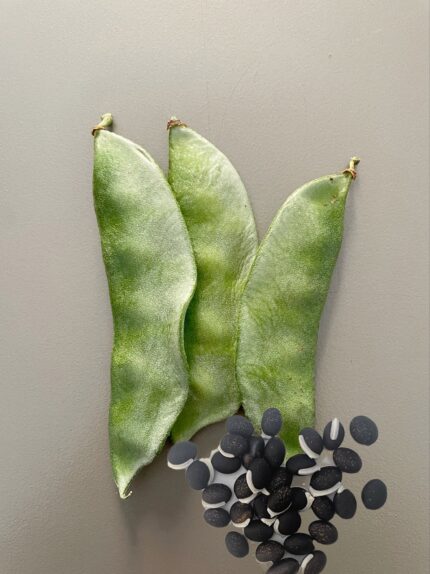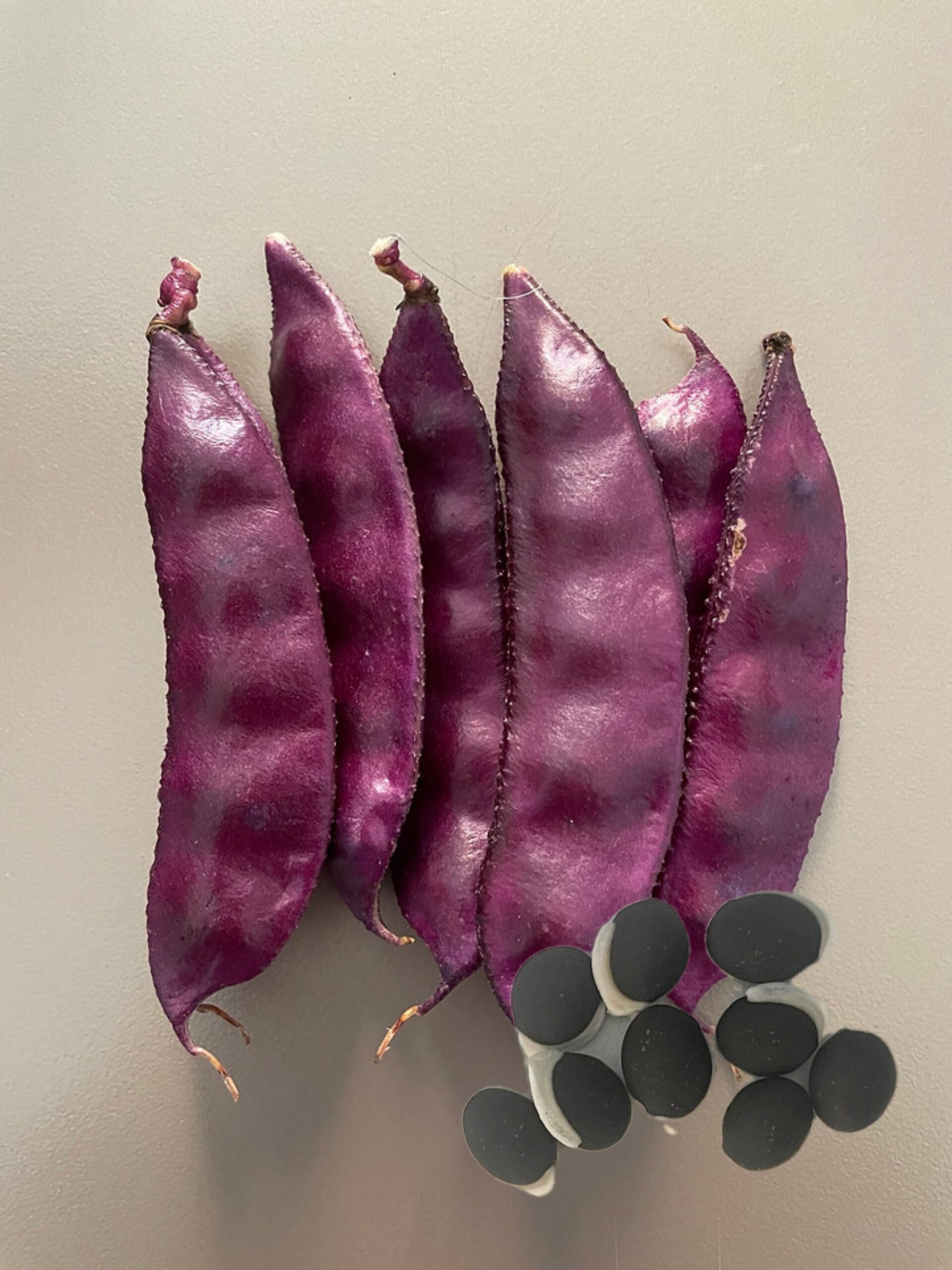Pink Long Broad Beans are a unique variety of broad beans (fava beans) distinguished by their long pods and pinkish hue. These beans are often valued for their flavor, texture, and appearance, making them a great choice for gardeners and chefs alike. Here’s a detailed breakdown of this particular variety:
1. Appearance:
– Pods: The pods of Pink Long Broad Beans are long, typically 6-8 inches (15-20 cm) in length, and have a slender, smooth texture. They are usually green when immature and take on a more pale pinkish hue as they mature.
– Beans: The beans inside the pods are generally large, flat, and kidney-shaped, with a pale pink color that gives them their name. As the beans mature, they may lose some of the pink color and turn a pale cream or beige, though they still retain their distinct broad bean shape.
2. Plant Characteristics:
– Growth: The plant itself is tall and robust, reaching a height of about 3-5 feet (90-150 cm). These beans are typically grown on sturdy, upright plants that produce multiple pods.
– Flowers: Pink Long Broad Beans usually produce white or pale-pink flowers, which later develop into the long pods.
– Compactness: Despite being relatively tall, this variety has a compact growing habit compared to some larger broad bean types, making it suitable for small to medium-sized garden spaces.
3. Cultivation:
– Climate: Like all broad beans, Pink Long Broad Beans are best suited for cooler climates. They are typically planted in early spring or late autumn, as they can olerate light frosts and cooler growing conditions.
– Growing Conditions: These beans prefer well-drained, fertile soiland full sunlight. They can be grown in raised beds or directly in the ground. Broad beans are fairly low-maintenance, requiring occasional staking or support for their tall plants.
– Harvesting: The beans are harvested when the pods are fully mature and slightly leathery but still green or pinkish in color. Over-ripened pods can become tough and the beans inside can lose their tender texture.
4. Nutritional Value:
– Protein: Pink Long Broad Beans, like all fava beans, are an excellent source of plant-based protein, making them a great choice for vegetarians and vegans.
– Fiber: They are high in dietary fiber, which helps in digestion, maintaining blood sugar levels, and promoting heart health.
– Vitamins & Minerals: These beans are rich in iron, potassium, magnesium, folate, and B-vitamins, all of which support overall health, energy production, and immune function.
– Low in Fat: Broad beans are naturally low in fat and provide a healthy, heart-friendly option for a balanced diet.
5. Culinary Uses:
– Fresh Beans: Pink Long Broad Beans can be cooked fresh in a variety of dishes. They can be boiled, steamed, or sautéed and are often used in soups, stews, salads, or mashed for spreads.
– Dried Beans: Dried beans can be soaked overnight and then used in soups, curries, and casseroles. Dried beans should be cooked thoroughly to remove natural toxins and improve digestibility.
– Flavor: These beans have a mild, nutty flavor with a creamy, smooth texture when cooked, which makes them versatile in many cuisines. Their delicate flavor complements both savory and vegetarian dishes.
– Traditional Dishes: In Mediterranean, Middle Eastern, and North African cooking, fava beans like the Pink Long variety are commonly used in traditional dishes like ful medames (Egyptian fava bean stew) or broad bean dips.
6. Health Considerations:
– Toxicity: Like all broad beans, Pink Long Broad Beans contain naturally occurring toxins, such as vicine and convicine, that can cause health issues in susceptible individuals. These toxins are deactivated through proper cooking, so the beans should always be boiled or blanched thoroughly before eating.
– Favism: People with favism, a genetic disorder affecting certain enzymes in the blood, should avoid consuming fava beans, as they may cause hemolytic anemia.
7. Storage:
– Fresh Beans: Fresh beans should be stored in the refrigerator for up to a week. If you can’t consume them right away, they can be blanched and frozen to preserve their freshness.
– Dried Beans: Dried beans can be stored in a cool, dry place in an airtight container for up to several months. Dried beans can be soaked and then cooked for use in various dishes.
8. Other Uses:
-Fodder: Broad beans, including the Pink Long variety, can be used as fodder for livestock, as their high-protein content makes them suitable for feeding animals.
– Soil Improvement: As a legume, the plant is also great for nitrogen fixation, which improves soil health, particularly when used in crop rotation or as part of a cover cropping system.














Reviews
Clear filtersThere are no reviews yet.